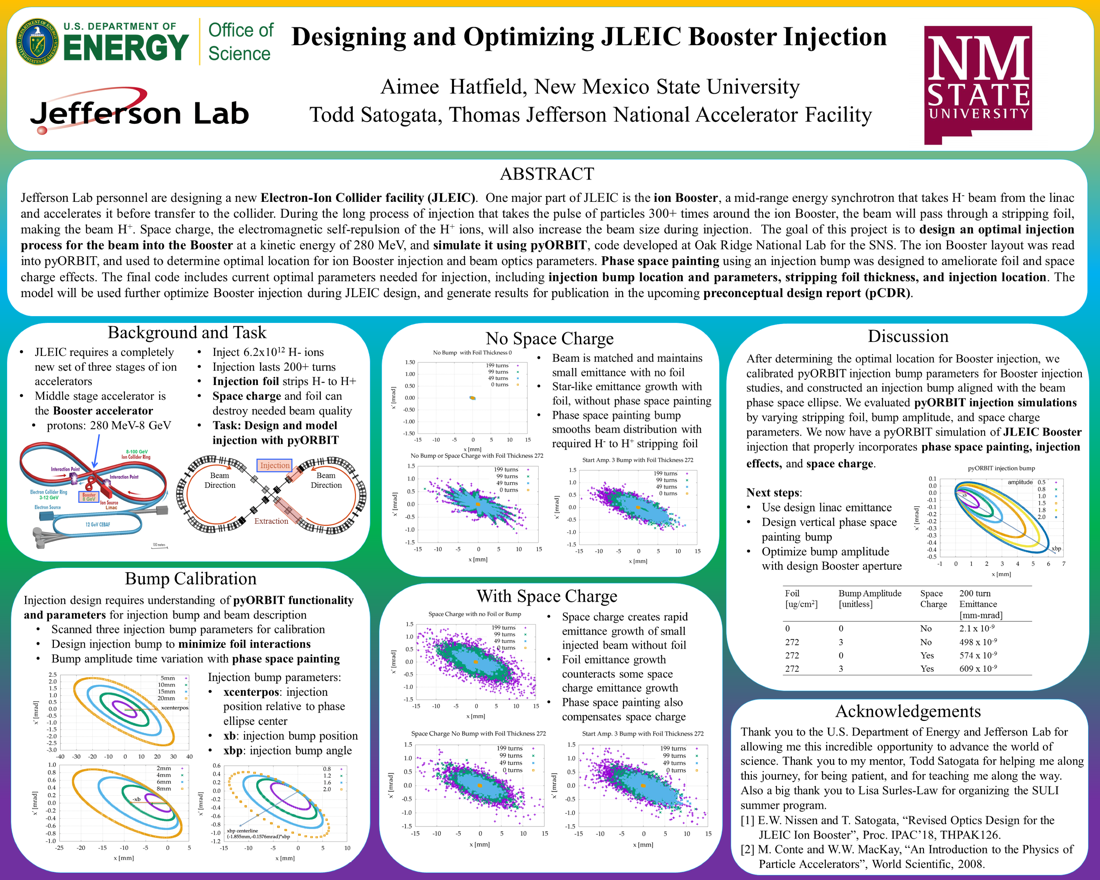Undergraduate Research at Jefferson Lab
Designing and Optimizing JLEIC Booster Injection
Student: Aimee Hatfield
School: New Mexico State University
Mentored By: Todd Satogata
Jefferson Lab personnel are designing a new Electron-Ion Collider facility (JLEIC). One major part of JLEIC is the ion Booster, a mid-range energy synchrotron that takes an H- beam from the linac and accelerates it before transfer to the collider. During the long process of injection that takes the pulse of particles 300+ times around the ion Booster, the beam will pass through a stripping foil, making the beam H+. Space charge, the tendency for like particles to push apart, can affect how the beam acts and needs to be accounted for. The goal of this project is to design an optimal injection process for the beam into the Booster at a kinetic energy of 280 MeV and simulate it using codes in pyORBIT, a code developed at Oak Ridge National Lab for the SNS. To do this, the ion Booster layout needed to be read into pyORBIT, which was used to determine optimal location for ion Booster injection and beam optics parameters. Phase space painting using an injection bump is designed to ameliorate space charge effects. Designing the injection bump involved exploring various parameters and the stripping foil to explore the injected beam quality. The final code will include the chosen and calculated optimal parameters needed for ion Booster injection, including the injection bump location, stripping foil, and injection location. The model can be used to investigate changing parameters of ion Booster injection and how the beam is affected by them. This code will be used for future design of JLEIC, including generating results for publication in the upcoming preconceptual design report.

Citation and linking information
For questions about this page, please contact Education Web Administrator.
